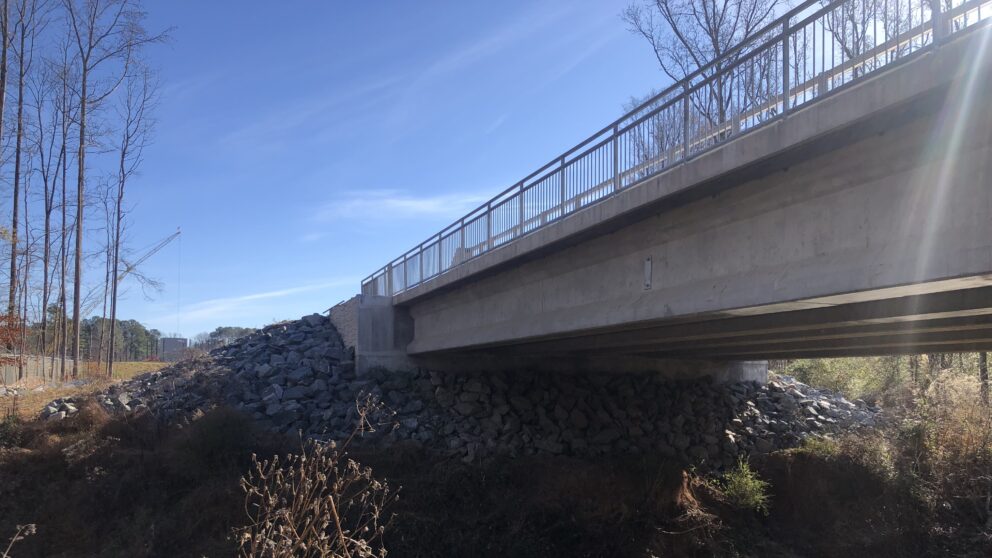
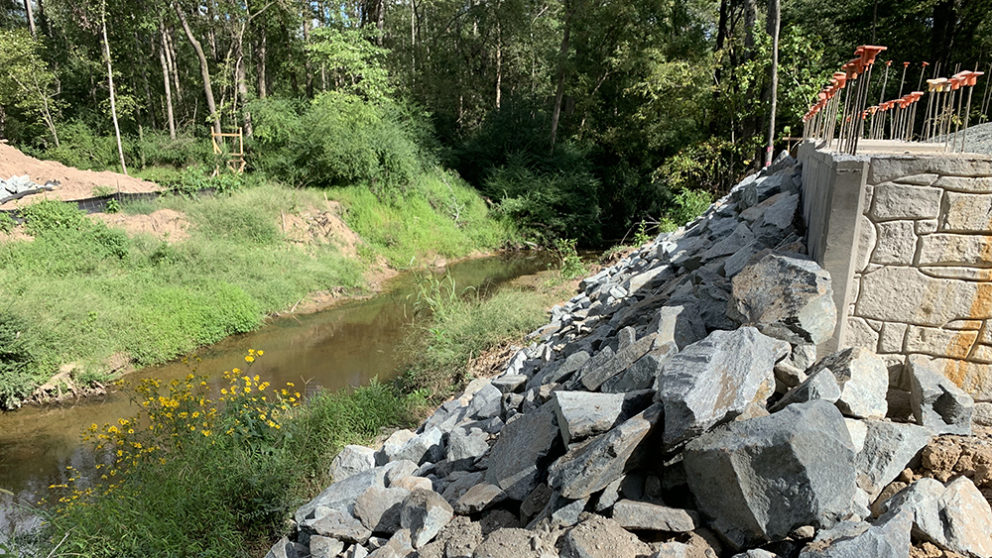
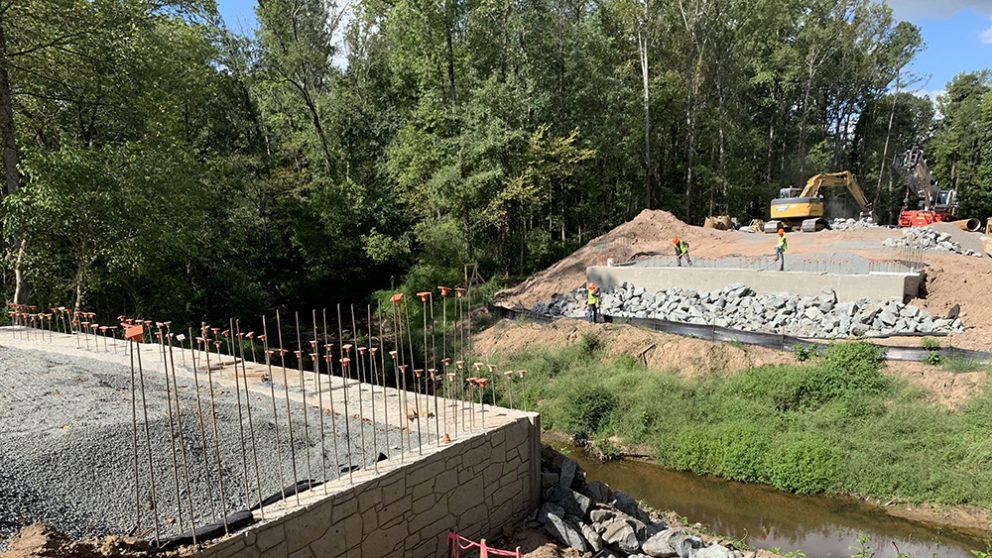
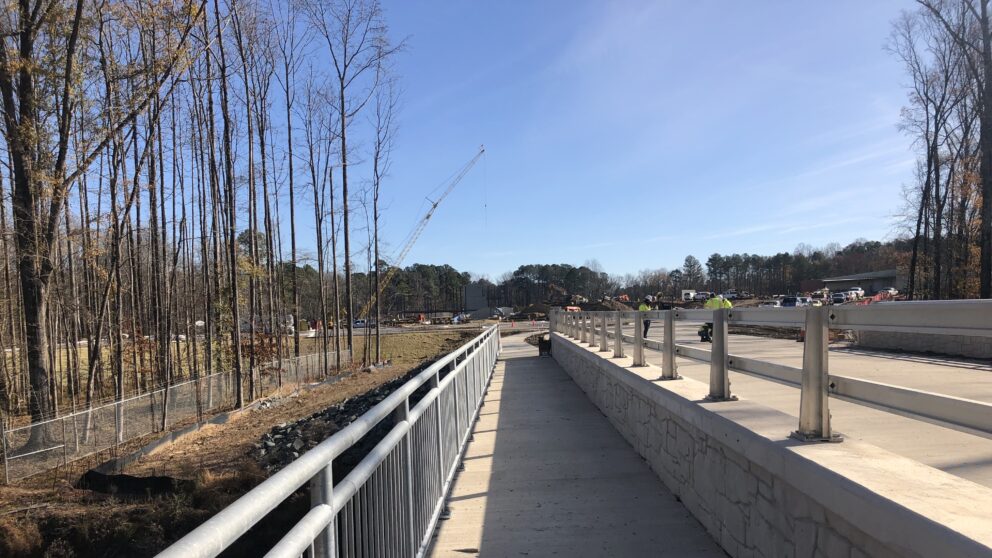
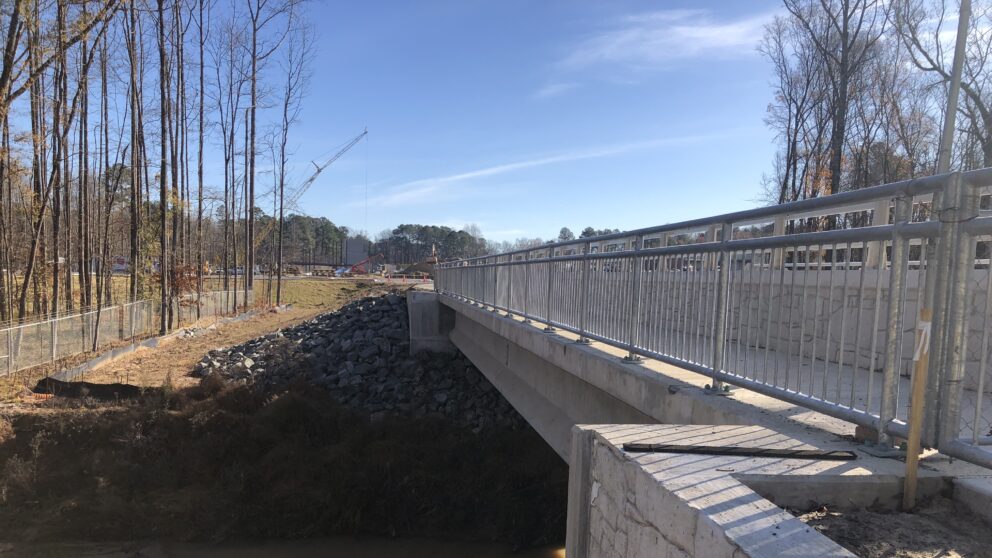
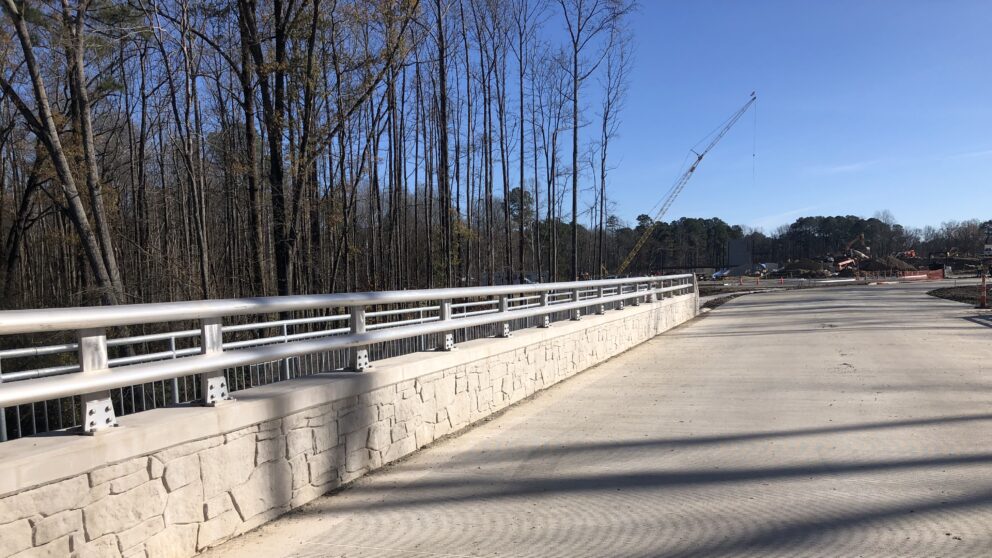
Overview
Timmons Group was the prime designer providing roadway and bridge design services as part of the site development for a new water treatment facility in Durham, NC. As part of a larger overall project that includes the adjacent water treatment facility, it involves design of an access road to the facility complex, requiring a stream crossing. The bridge is a 90’ prestressed concrete girder structure, chosen as the most cost-effective bridge option with the fewest long-term maintenance requirements.
When first envisioned, the structure was a longer multi-span curved structure on a significant vertical curve. Timmons Group’s structural team worked with the owner, hydraulics, and roadway engineers to streamline the structure and alignment was modified to allow for a straight bridge, significantly simplifying the design and greatly reducing construction costs.
The bridge is designed as a jointless structure with integral abutments to reduce long-term maintenance impacts to the bridge components. The prestressed concrete girders provide an efficient means of spanning the necessary length while providing the lowest maintenance option for a water crossing. The abutment piles are designed for anticipated scour conditions. The bridge cross-section accommodates pedestrian traffic as well as vehicular traffic with a barrier separation between the two. The bridge is designed to incorporate aesthetic features, including the use of concrete formliner and concrete staining to provide the appearance of stone façade on the parapets, abutments and retaining walls.
Timmons Group performed a full hydrologic and hydraulic analysis for the stream crossing to determine the impacts on the 100-year floodplain elevation and limits. This work included a CLOMR/LOMR process through FEMA due to changes in the 100-year floodplain.
Scour analysis was also performed as part of the project. Initial design scour depths were larger than expected, so throughout the design process structural, hydraulic and roadway engineers worked together to refine the hydraulic modeling and bridge layout to limit the scour impacts. The hydraulic model was updated with a more accurate terrain model than the existing FEMA models, and the bridge wingwall layout was revised to produce improved flow conditions approaching the bridge. These updates lessened the water velocities under the bridge and reduced the design scour depth.